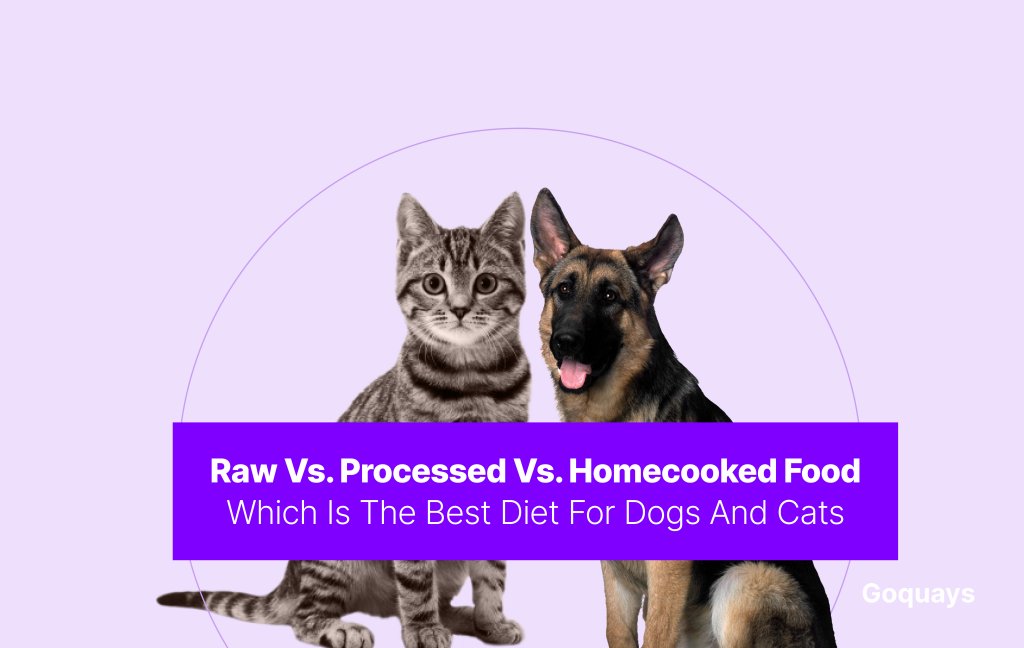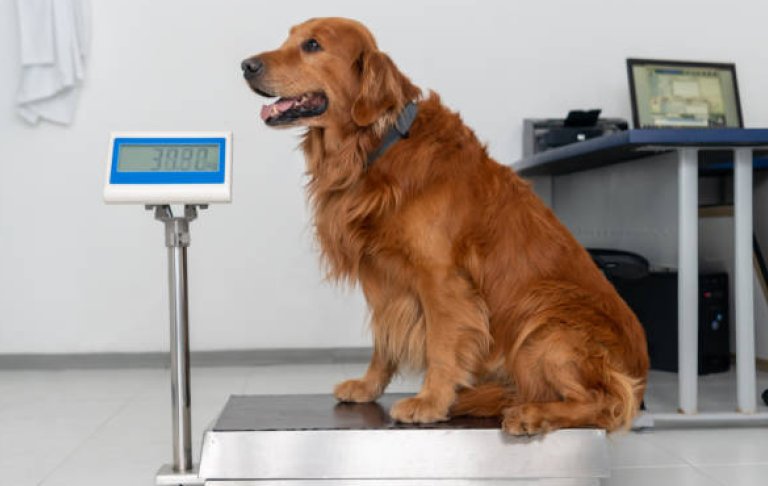When it comes to our pets, nutrition is one of the most passionate and confusing topics for owners. From glossy ads promoting “all-natural” kibble to viral videos of raw-fed dogs thriving, pet parents ends up feeling overwhelmed on what pet food to go for.
Which boils down to raw vs. processed vs homecooked foods: which is best for your dog or cat?
In this post, we will explore the nutritional science, veterinary opinions, safety concerns, and practical considerations of each approach, so you can make the most informed decision for your pet’s health and happiness.
Understanding your pet’s nutrition needs
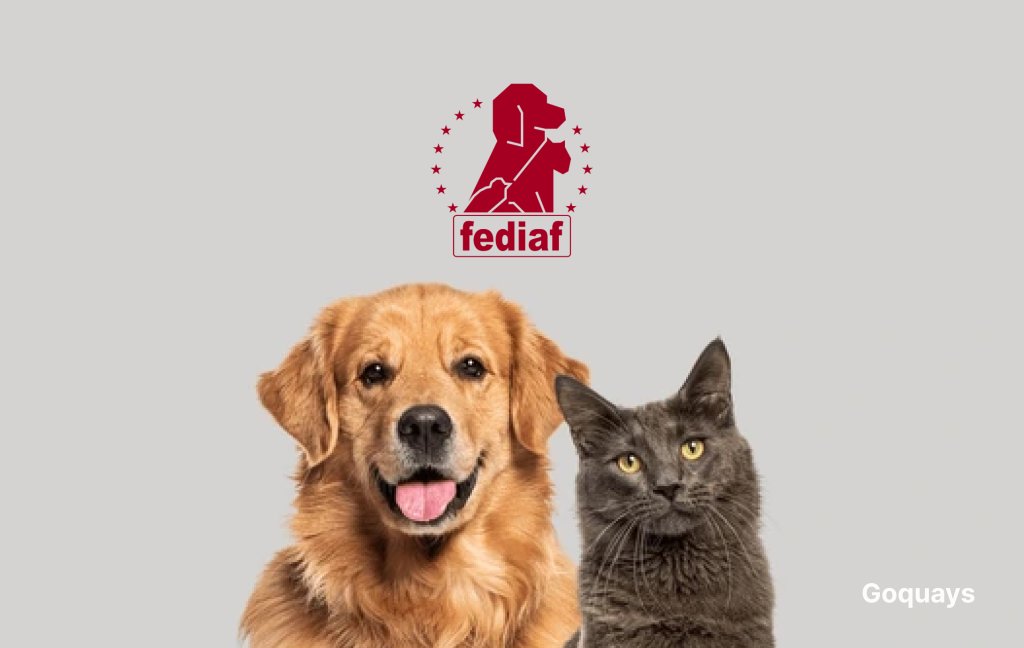
It’s important to understand the essential nutrients your pets need (cats and dogs). FEDIAF (The European Pet Food Industry Federation)—the official body setting pet nutrition standards across Europe and the UK, before deciding whether to opt for raw, processed or homemade food for them. While most pets are carnivorous animals, their requirements vary.
For dogs;
Dogs are considered omnivores with carnivores tendecies. That is, they can digest both animal and plant-based foods. According to FEDIAF, a balanced canine meal should include;
- High-quality animal protein for tissue repair and immune health
- Essential fatty acids, like linoleic acid, are for skin and coat health
- Carbohydrates and fibre for energy and gut health (optional but beneficial)
- Vitamins and minerals such as calcium, phosphorus, and B vitamins
- Water, especially important when feeding dry kibble
For cats
Cats are known to be obligate carnivores, which means their bodies are meant to digest meat only. The typical nutrition requirements for cats include;
- Taurine, an amino acid vital for vision and heart health
- Arachidonic acid, a fatty acid that cats can’t synthesise themselves
- Animal-based protein is at higher levels than in dogs
- Vitamin A and niacin, which must come from animal sources
- Very low carbohydrates, as cats have a limited ability to digest starch
Raw food diet

What is a raw food diet for pets?
The raw food diet, also referred to as the BARF diet (Biologically Appropriate Raw Food or Bones and Raw Food), is based on feeding pets a diet that closely mimics what their wild ancestors might have eaten. Pet raw food diets include raw muscle meat, bones (either ground or whole), organs like liver or kidney, and also fruits, vegetables, and eggs.
Among certain pet parents, raw feeding is believed to be the best and natural approach to feeding pets as it easily contains high nutritional value compared to processed pet food.
Pros of a raw diet
- High nutrient content: Raw food is unprocessed, meaning it retains more of its natural nutrients, enzymes, and moisture, especially beneficial for cats, who don’t drink enough water.
- Improved coat and skin: Many raw feeders report that their pets develop shinier coats, healthier skin, and fewer allergies.
- Dental health: Chewing on raw bones can help naturally clean teeth and strengthen jaw muscles.
- Increased energy and smaller stools: Some pet owners notice increased vitality in their pets and smaller, firmer stools due to the high digestibility of raw diets.
Cons of a Raw diet
- Risk of bacterial contamination: Raw meat can harbour harmful pathogens like Salmonella, E. coli, or Listeria, posing risks to both pets and humans in the household.
- Nutritional imbalance: Without proper planning and vet guidance, raw diets can lack essential vitamins and minerals, potentially leading to long-term health issues.
- Not suitable for all pets: Pets with compromised immune systems, certain health conditions, or seniors may not tolerate raw diets well.
- Time-consuming and expensive: Sourcing, preparing, and safely storing raw food requires effort and can cost more than processed pet food.
While raw feeding seems like the right food for your pet, it’s also tricky because, as a pet parent, you need to consider the safety and ensure the nutrition is balanced. The FEDIAF also does not endorse raw diets unless they meet its complete nutritional standards.
Processed food (Kibble and wet food)
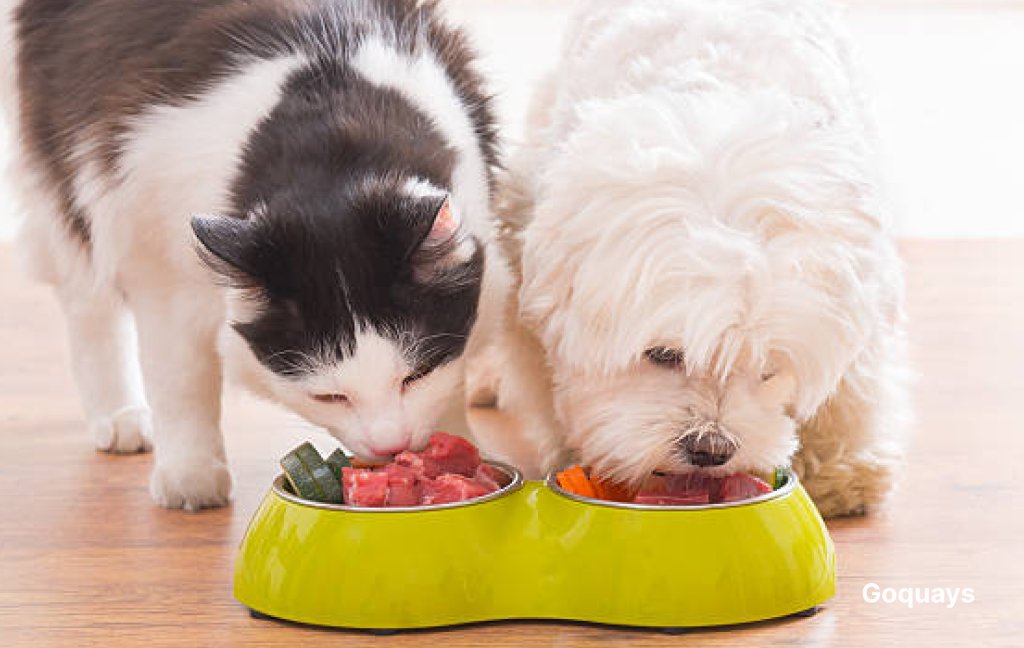
What is processed pet food?
Processed food is a very common option among cat and dog owners. This is mostly due to its convenience and availability. Processed food comes in two forms: we have dry food(kibble) and wet food(canned or pouch meals). Processed foods are produced using ingredients like meats, grains, vegetables, fats and additives, ensuring your pet gets the required nutrition from their meal.
Pros of processed food
- Convenient and time-saving: Kibble and wet food require no preparation, which makes them ideal for busy pet owners. They are easy to store, measure, and serve.
- Affordable and widely available: Processed pet food comes in a wide range of prices, with many budget-friendly and premium options to choose from in the UK.
- Nutritionally balanced: Most brands are formulated with the essential nutrients pets need, including vitamins and minerals. This eliminates the guesswork involved in homemade diets.
- Variety for specific needs: Specialised formulas exist for puppies, kittens, seniors, pets with allergies, and those with specific medical conditions like kidney disease or obesity.
Cons of processed food
- Lower moisture content in kibble: You need to look out for this, especially if you have a cat; dry food can contribute to dehydration and urinary issues if water intake isn’t monitored closely.
- Use of fillers and additives: Some brands use low-quality ingredients like meat by-products, artificial preservatives, colours, or flavour enhancers, which may impact long-term health.
May trigger allergies: Pets sensitive to certain grains or proteins might experience allergies or digestive issues if fed the wrong type of commercial food.
Homemade Meals
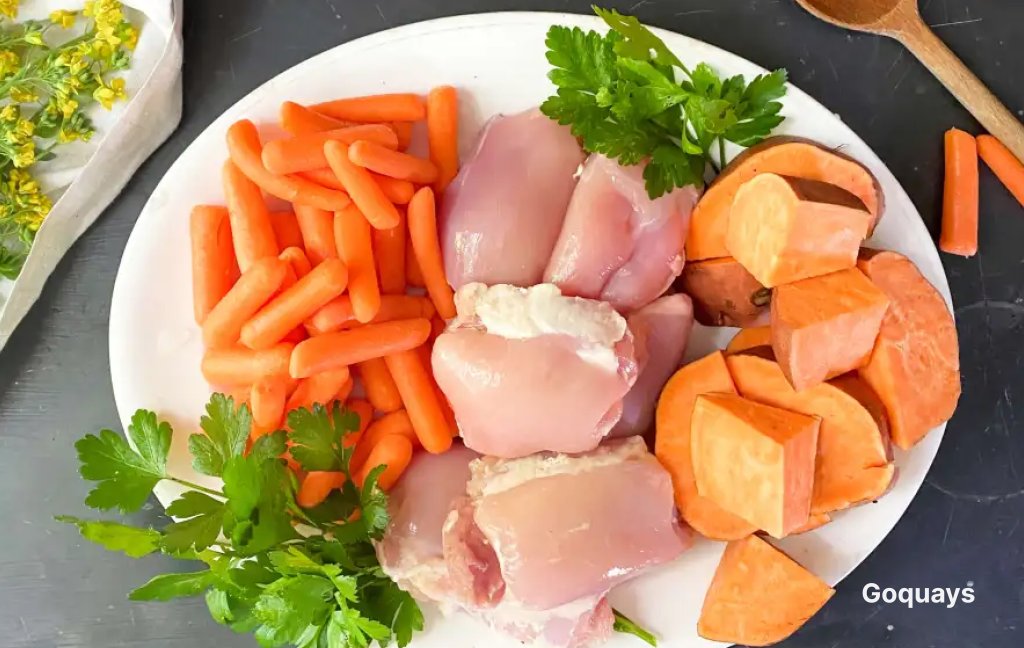
What are Homemade meals?
Home-cooked meals for pets involve preparing fresh, cooked food using ingredients you can easily buy or can even find in your kitchen, such as lean meats, vegetables, grains, and healthy fats. Unlike raw or processed diets, this gives you full control over what your pet eats and a more personalised feeding experience. With vet guidance, this can be a great feeding option for pet parents with senior cats
Home-cooked meals serve as a middle ground between raw and processed foods. It’s especially popular among pet parents who want to avoid preservatives and highly processed ingredients but aren’t comfortable with raw feeding.
Pros of home-cooked meals
- Ingredient transparency: You are sure of your pet’s food intake, and you know exactly what’s in your pet’s bowl. No mystery meats or unknown additives.
- Customisable for health needs: Home cooking allows you to tailor meals to suit your pet’s age, allergies, dietary sensitivities, or medical conditions (especially under vet guidance).
- Gentler on the digestive system: Cooked meals are often easier to digest than raw diets, especially for pets with sensitive stomachs or health issues.
- No risk of pathogens: Properly cooked food eliminates the bacterial risks associated with raw feeding, creating a safer environment for both pets and humans.
Cons of home-cooked meals
- Time-consuming: Meal planning, cooking, and storing fresh food regularly can be demanding, especially for multi-pet households.
- Nutritional gaps: Without expert guidance, it’s easy to miss essential nutrients, which could lead to deficiencies over time.
- Higher Cost: Sourcing quality ingredients and supplements (like calcium or taurine) can add up quickly.
Shorter Shelf Life: Freshly cooked meals spoil faster than processed options, requiring refrigeration or freezing and careful handling.
Comparing the three diets (Raw, processed, home-cooked
Feature | Raw | Processsed | Homemade |
Nutritional balance | It can be balanced, but often isn’t | Formulated to FEDIAF standards | Requires vet/nutritionist guidance |
Convience | Low Requires prep/storage | High – Scoop and serve | Medium prep time, batch cooking |
Cost | High | Low-Medium | medium-high |
Shelf life | Short – needs freezing/refrigeration | Long – Dry and shelf-stable | Short – must be stored properly |
Digestibilty | High | Varies by brand and ingredients | High when formulated well |
Allergen control | High – Limited ingredients | Varies – Additives common | High when formulated well |
Hygiene and safety risk | Moderate to high (pathogens) | low | Moderate (depends on cooking practices) |
Veterinary support | Mixed opinions | Widely supported | Supported if properly formulated |
Moisture content | High (good for hydration) | Low | High |
Customisability | Moderate | Low | Very high |
What Vets and experts say
When choosing between raw, processed, and home-cooked meals, you are also considering your pet’s long-term health. That’s why UK veterinary professionals and pet nutritionists consistently urge pet parents to base feeding decisions on scientific evidence, not online trends.
What UK Vets Recommend
According to the British Veterinary Association (BVA), the safest and most reliable option for most pets is commercially prepared food, whether dry or wet, because it is formulated to meet established nutritional standards. These diets are balanced to provide all essential nutrients, rigorously tested, and regulated under UK food safety laws.
However, raw feeding is a conflicting decision among vets. While some pet owners report benefits like shinier coats or cleaner teeth, UK veterinary bodies, including the BVA and the Royal Veterinary College, warn against the high risk of bacterial contamination, nutrient imbalances, and the dangers it may pose to both pets and people in the household.
“We do not recommend feeding raw diets unless they have been professionally formulated and the pet owner understands the risks”, notes the BVA in its public guidance.
Home-cooked meals: with caution
Home-cooked meals offer more control over ingredients, but vets strongly recommend that they be created in consultation with a veterinary nutritionist. Without proper guidance, it’s easy to miss critical nutrients such as calcium, taurine, or omega-3 fatty acids, which can lead to long-term health complications.
A 2023 review by the Royal Veterinary College found that 95% of home-prepared diets online were nutritionally incomplete, often lacking key elements that support organ health and immune function.

